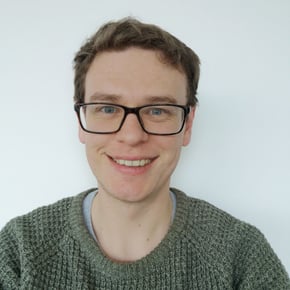Interactive audio designer and recent graduate of our Sound for Games & Apps course, Orion Zane has long been exploring the ways in which he can use technology to change the way we experience sound.
With the release of his new EP Rhwng y Rithwir (Between the Virtual), those explorations have come to a head in an exciting and ambitious project, one that looks to make the listener an active participant in how the music is shaped.
Level one
Growing up in Llanelli in South Wales, Orion owes a lot of where he is to his father, who not only introduced him to his favourite video games at a young age, but also the music of Sigur Rós - who would end up being the first act Orion ever saw live.
Video games needed no time to ensnare Orion's attention, yet in spite of his interest in music, both guitar and drums failed to capture his imagination. However, as his love for Sigur Rós continued to grow, he became obsessed with the piano and at age 11, finally committed to learning to play.
From there, he began to find inspiration in the work of Ludovico Einaudi, as well Joe Hisaishi, who is responsible for much of the music featured in Studio Ghibli films, but it would still be a few more years before video games and music coalesced.
"It was when I first jumped onto Cubase in Year 9 at school," says Orion of the moment when making sound and music for games really dawned on him. "As I started with all the FX, filters and environmental sounds like rain, I started to think about doing sound replacements for gameplay and that's how it all started.
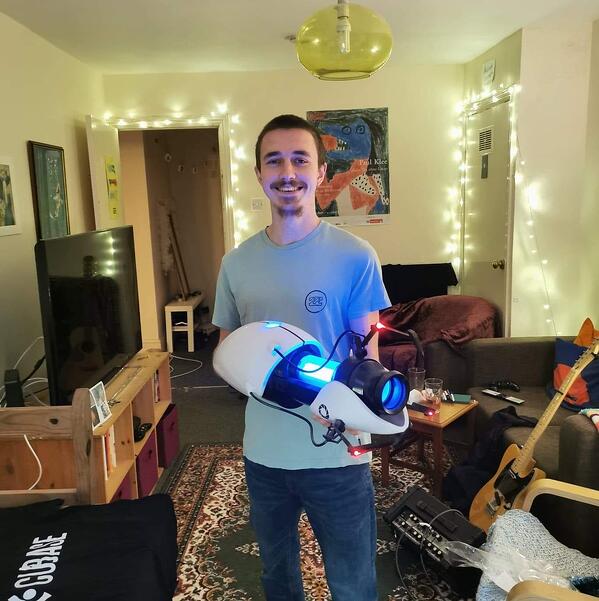
Orion with his coveted Portal gun replica, the main video game responsible for fuelling his passion to pursue interactive audio.
"They let me use it [Cubase] instead of Sibelius - I hated it - for GCSE music. I used to spend most of my free time on breaks and free lessons in that class, just making this stuff I used to love called Chillstep and getting used to Cubase 5. When I got to college though, that's when it started kicking off.
"I had a great teacher (Big ups Simon Prothero). There was a small studio room, and I completely claimed it as my own for the three years I was there and that's where I made most of FlowerTeaVillage. Unfortunately, I've not found a good productive spot for my music since then, that room just did something for me, I miss it loads."
Let's get physical
In the years between discovering Cubase and joining dBs Music, Orion became enveloped in the world of game audio and when the time came to consider where to study at degree level, he was drawn not only to the Sound for Games & Apps course, but also Bristol as a city.
"I didn't know what it was going to be like, but I saw dBs Music and wanted to join because of the games course. At that time I think there was only one other game audio course in Manchester. That's why I came to Bristol firstly, but I fell in love with the city so I decided I was staying."
By this point, Orion had already spent years forging his path, but it wasn't until joining the course at dBs that the foundations for the work he specialises in now were laid down.
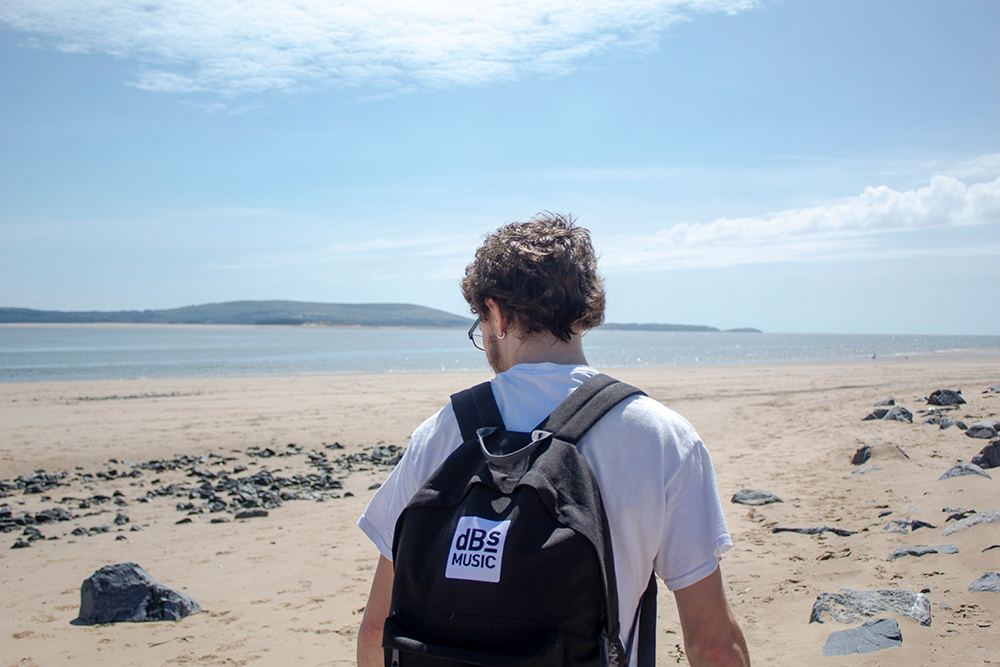
"I learned a lot of the programming side of things through the games course. Rich Hemming, who used to be the programme leader was responsible for getting me into the interactive side of things. I'd never really thought about it until I was having conversations with him and other third year students. That was when I realised how many possibilities there were."
Those conversations started something whirring inside Orion's head, but the catalyst for how he would realise these ideas were entirely unrelated to game audio.
"When I've been listening to electronic music, particularly bassline, I do the hand movements when I'm dancing and it inspired me to create something that uses body movements to control the music. It was after looking into different ways of interaction with sound that I came across colour tracking and facial recognition."
From this inspiration came three separate projects. Fushic or Fish Music, which uses colour tracking to pinpoint certain objects - in this case Orion's goldfish Tofu and Barry7 - and uses their motion to manipulate sound within Reaktor. Kinect Sound, which enables a person to directly interact with the melodic structure of a piece through body movements.
And finally, Facial Recognition, which is perhaps the most interesting of the three.
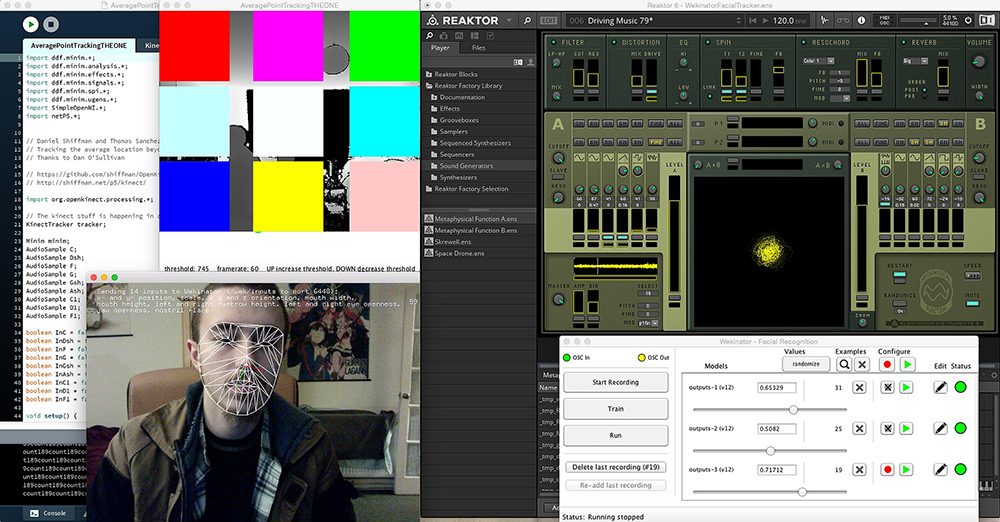
"I used this software called Wekinator, which was created by Rebecca Fiebrink back in 2009. It's a machine learning software, so say when my eyes are really open and I hit record, it will take a sample of what my face looks like. I can then connect all those samples to Reaktor 6, which then controls the different parameters.
"I decided that when you open your mouth all the reverb comes up and everything becomes very spacious, then when you smile the reso chord lifts the song up and has a melodic effect on the piece. Then if you close your eyes, the low-pass filter cuts down."
Sosban Fach
Though Orion didn't know it at the time, these systems and his new understanding of their potential would become an intrinsic part of Rhwng y Rithwir (Between the Virtual). However, as he approached his final year at dBs Music, Orion was embarking on yet another creative endeavour; his dissertation project Sosban Fach.
"Sosban Fach is a short walking simulator horror game that looks at how players react to sound. The original idea came from a paper called 'A Climate of Fear' written by Professor Mark Grimshaw and Dr. Tom Alexander Garner and I wanted to base my research on a theory in that paper. So I messaged Mark and he said this was Tom's work and that I should speak to him.
"Tom had created this concept called 'Virtual Acoustic Ecology of Fear' which analyses the relationship between the player, the environment and the sound, and to a greater extent the relationships between all those elements, and it was this that I based Sosban Fach on.
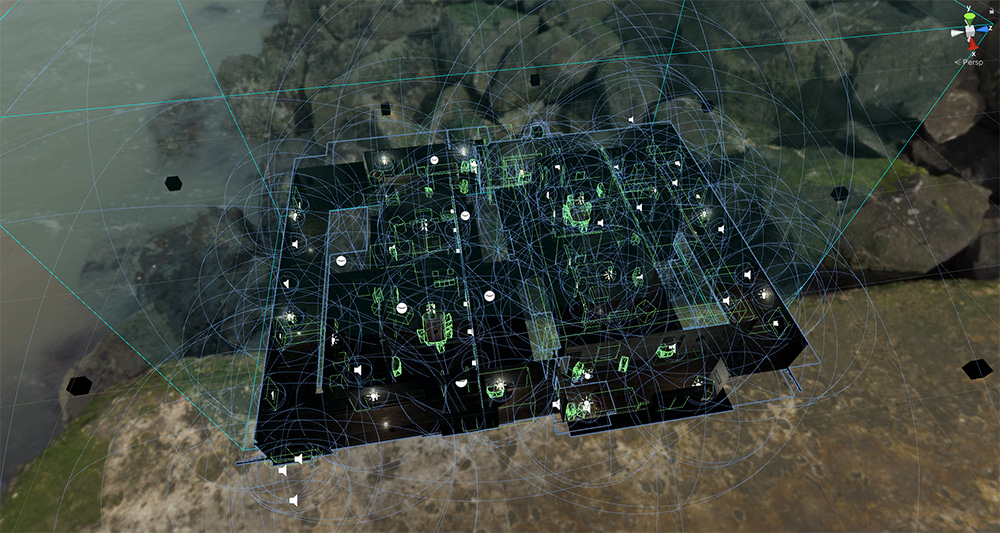
A look at the map and audio zones used in Sosban Fach
"Tom actually got more involved in the project and we discussed how we research his concept with sound as the only variable with a horror theme in mind. For example, an enemy running around would affect how a person behaves without even considering the impetus of sound.
"I took inspiration from Hideo Kojima's P.T. because it's structured as a loop and the environment is always the same. Once the player is used to the environment, nothing else is going to change visually, which then means sound is the only variable."
Between the Virtual
On July 10th, 2020, Orion released 'Rhwng y Rithwir (Between the Virtual)'. Awash with ambient soundscapes and field recordings, its five tracks transport you to another world. Yet Orion had much bigger ambitions for this work than a simple EP.
"I have a lot of generative sound patches that I just like to make, and I finally thought I should release them. I crafted these first, then I made it interactive for the installation. The patches are infinite, so they just keep going if you leave them; that's why they're good for public space. Then I wanted to release them properly so I exported 6 minutes from 5 patches and added to them with of course, a ton of field recordings. I gave them a little structure by controlling some of the parameters, especially reverb and that's it really."
With interactivity at its heart, it's somewhat bittersweet to see the EP release at a time when the world is unable to gather en masse. Undeterred by this, Orion has set his sights on the BBC New Creatives initiative to bring his vision to the public when it's safe to do so.
"I have sent off my proposal to the BBC stating my vision and how far I've come with it. The hope is that, if you are in that room, you are in some way contributing to the music/soundscape.
"These three systems [Fushic, Facial Recognition and Kinect Sound] will be key areas of a bigger installation. I am hoping to use a lot of Ultrasonic Sensor HC-SR04 (range detection) and Arduino to make other simple accessible instruments around the walls.
"Similar to what Anders Lind did in 2016 with the LINES installation, my aim is to really expand on this. I want people to walk in this room and be controlling sounds without them even knowing it, but also are able to knowingly contribute to it meaningfully at the same time."

FIND OUT MORE:
Orion Zane Audio
Spotify
Facebook
Instagram
